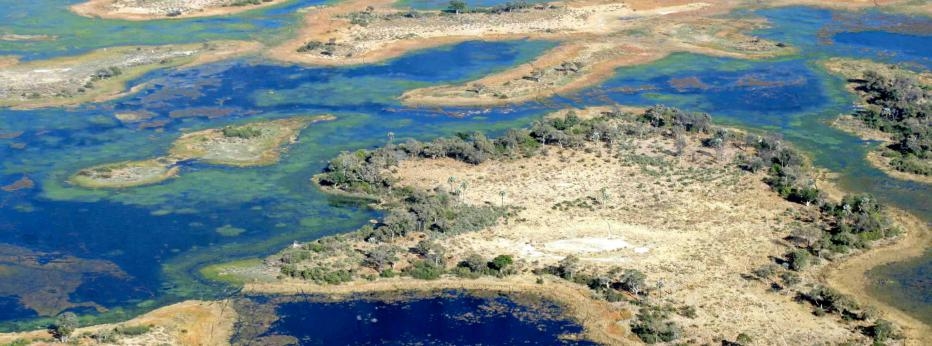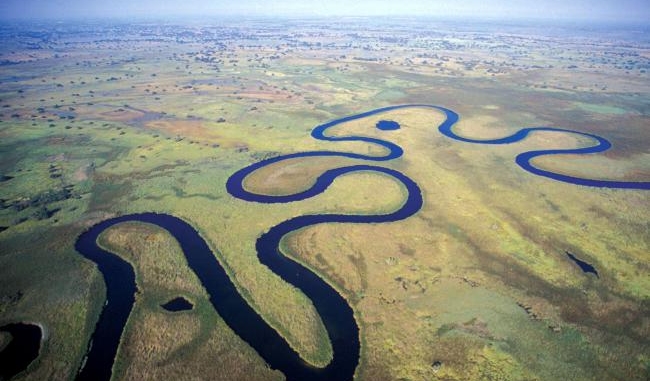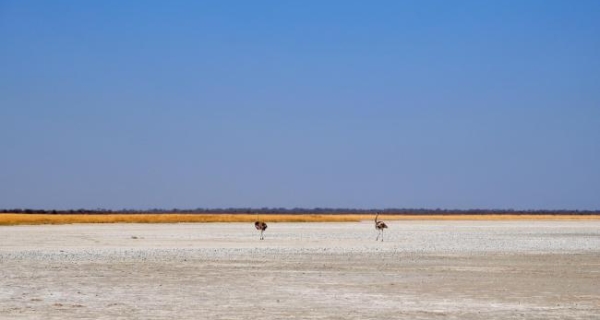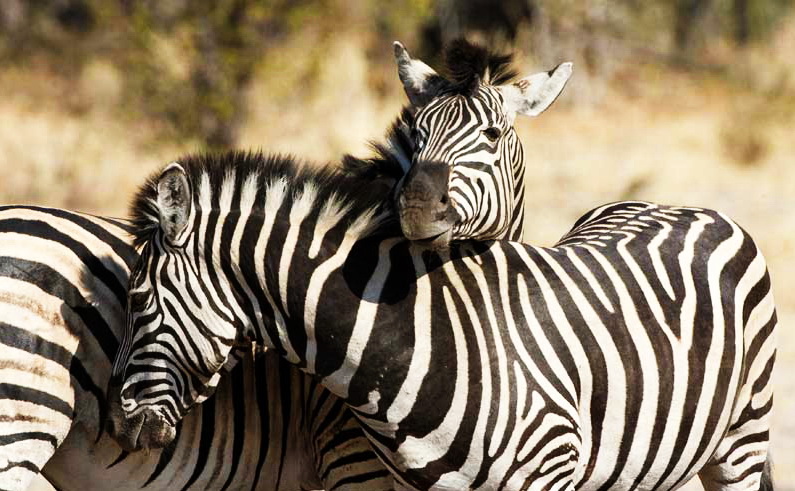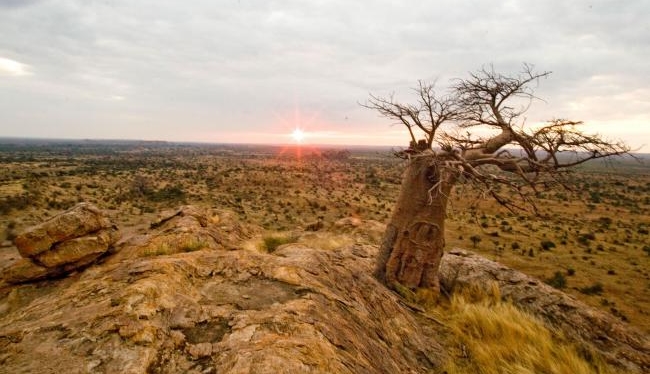The second in our May series of blogs on Botswana looks at the country’s greatest national parks and game reserves. From the lush, wetland paradise of the Okavango Delta to the dry and arid Kalahari Desert, Botswana offers a rich variety of wilderness areas, and between them many unique safari experiences that simply can’t be replicated anywhere else in Africa. Read on to learn more about Botswana’s most spectacular national parks and game reserves.
The Okavango Delta, Botswana’s primary wildlife attraction, is one of Africa’s greatest wilderness areas, its landscapes rivalling even those of the Masai Mara and Ngorongoro for beauty. A seasonal floodplain, the Okavango can expand to over 16,000km during the flooding season, making it the world’s largest inland delta. It is best visited during the dry season, however, when it is alive with migrating wildlife, its waters frequented by over 200,000 large mammals. It is at this time of year that its flooded channels and lagoons are most easily explored by motor boat or dugout canoe, the latter offering a one-of-a-kind safari experience that few ever forget.
At the centre of the of the Okavango, and constituting about one fifth of the Delta as a whole, is Moremi Game Reserve, among the most spectacular wilderness zones in all of Botswana, if not Southern Africa. Very much the heart of the Delta, much of Moremi is permanent water, and so even during the dry season it is one of the best spots in Botswana for a boating safari. Indeed, Moremi, in contrast to the rest of the country, swells up in the dry months of June to September as floodwaters arrive from Angola. The game concentrations are phenomenal at this time of year, and the climate, cool and dry, most welcoming. The reserve is not all water, however; thanks to its vast grasslands, it is one of the Africa’s last strongholds for wild dog, which thrive in the wide open terrain, as do staggering herds of elephant and buffalo.
At the other end of the spectrum to the Okavango Delta is the Kalahari Desert. The Kalahari receives little rain for most of the year, yet in spite of this a spectacular variety of wildlife manages to eke out a living in the harsh environment. It is a ‘green’, or fossil, desert, and bears more resemblance to the East African savannah than it does the towering sand dune deserts of neighbouring Namibia. A seemingly eternal tract of flat red earth, for most of the year the Kalahari is given colour only by the sparse vegetation of acacia, shrubs and golden grasses that thrive here and sustain the park’s varied game. Much of this game is permanent, though the larger mammals are generally migratory, and during the short wet season of Feb-Mar, when it is one of the most beautiful spots in Botswana, the Kalahari briefly comes alive with throngs of animals and greenery. Huge in scale, even during peak season the Central Kalahari has among the lowest density of tourists per square km of any park in Africa – its vastness and isolation is characteristic of Botswana, and of what makes safaris to this beautiful country so unique.
Much of what today constitutes the Kalahari Desert was once as lush as the Okavango, and Makgadikgadi, the vast saltpans that form part of the Kalahari, is evidence of this. A remarkably flat landscape, the saltpans of Makgadikgadi are the remains of what was once a giant superlake encompassing much of the Kalahari region. Like the Central Kalahari, the land is dry and cracked for lack of moisture during most of the year, its only vegetation the coarse grasses and lone baobab trees that stand out in this otherwise barren land, apart from a brief period during the wet months when pockets of earth briefly fill with water attracting pink clouds of flamingo, while the surrounding savannah is occupied by vast herds of zebra and wilderbeest. Meerkat are another attraction, and one that is present all-year in huge colonies that, in the dry months, spread out across the land.
Just north of, and contiguous to, the Makgadikgadi Pans is Nxai Pan National Park, a complex of pans that also includes Ngama-Ngama and Kudiakam. Often overlooked in favour of its southern neighbour, the 40 sq km Nxai Pan is a wonderful region of Botswana to experience, provided you travel at the right time of year. Like the Kalahari and Makgadikgadi to the south, Nxai Pan is best experienced during the wet season when it’s vast white pans can be teeming with zebra, gazelle, elephant and their attendant predators. Nxai’s main attraction is its remoteness; relatively few visit this region, allowing for undisturbed game-viewing (for the best, try and head to the remote Kgama-Kgama Pan to the north of Nxai itself). There are a number of intimate camps in the region, ranging from simple to luxury standard, including our favourite, Nxai Pan Camp.
Somewhere between the arid Kalahari and the lush Okavango Delta, in terms of its climate, is Chobe, Botswana’s traditional big game park, where gameviewing typically takes the form of drives in open-sided 4×4’s in search of big cats, elephant and wild dog. A public access park, Chobe receives a large number of tourists relative to its size, and in parts the strain is beginning to show. The park can become very busy during the peak season, though it’s possible to avoid the worst of the crowds, and there are a small number of intimate camps in remote spots that compare with the best of the Okavango. The crowds come to Chobe for a reason, of course, and that is the game, which is stunning year-round, though particularly so during the wet season (it is more sparse in the dry months, when many of the larger mammals migrate to the permanent waters of the Okavango Delta). Chobe has some of largest elephant herds in all of Africa, as well as healthy populations of lion, cheetah and leopard. For these and for other reasons, Chobe is a delight – just don’t expect the serenity of the Okavango Delta.
Often neglected on account of its remoteness from the main safari regions of the north, the Tuli Block, a thin strip of land located in eastern Botswana on the border with Zimbabwe, is a delight for those who make the effort to visit it. Its varied terrain of savannah plains, marshland and forest, and its rocky sandstone outcrops, mark it out from central and northern Botswana. There are healthy populations of big game here, including elephant and cats, but this is not Botswana’s most game-rich area. This is an advantage in one respect in that it makes possible activities not available elsewhere, such as mountain biking and hiking, both accompanied by trained rangers. The region has a number of private reserves focusing purely on game viewing, foremost among them Mashatu Game Reserve. Other reserves include Ntani and Northern Tuli. The reserves are open and game moves freely between them; taken together they form the largest private game conservation area in southern Africa.
We have created individual pages for each of Botswana’s national parks as well as our favourite camps within our main Botswana pages. See here: Botswana National Parks.
Visit Botswana with Gane and Marshall: to learn more about Botswana’s varied wilderness regions, its unique game parks and wildlife reserves, see our Botswana holiday pages or contact our safari specialists directly. Most of Botswana’s best national parks and reserves are conveniently located in the north of the country and can be easily covered during a single visit. We can help prepare such an itinerary, tailor-made to your preferences and incorporating the best of Botswana’s game parks—all at a very reasonable price!
Of course, getting the most out of Botswana means knowing when to visit as well as where to visit. With this in mind, keep an eye out for our upcoming blog on the best times of year to visit Botswana, when we’ll discuss the peak game-viewing periods as well as the most affordable times of year to travel.
